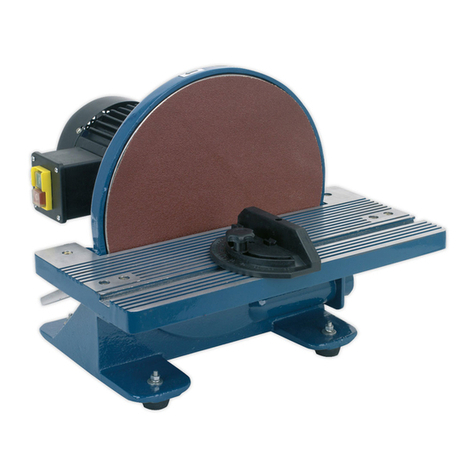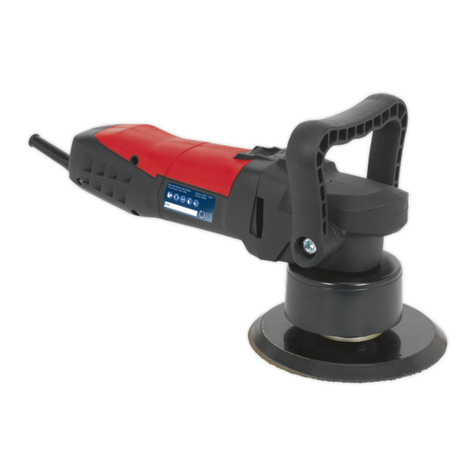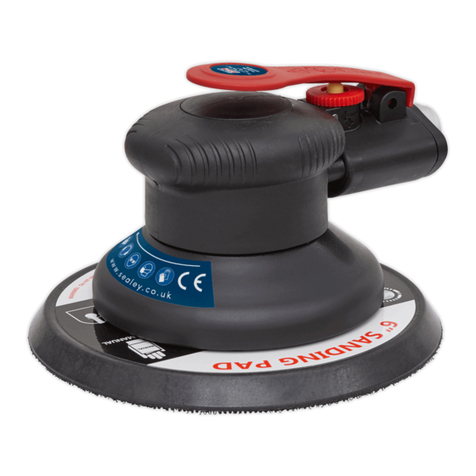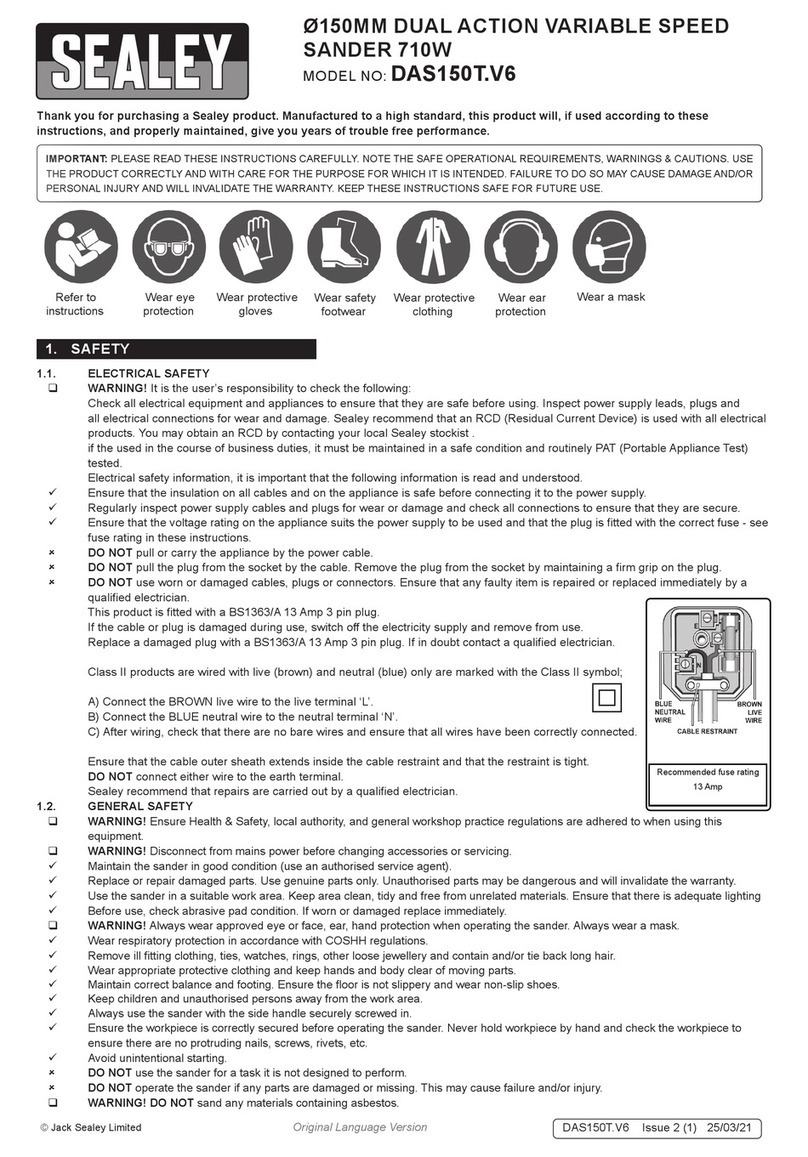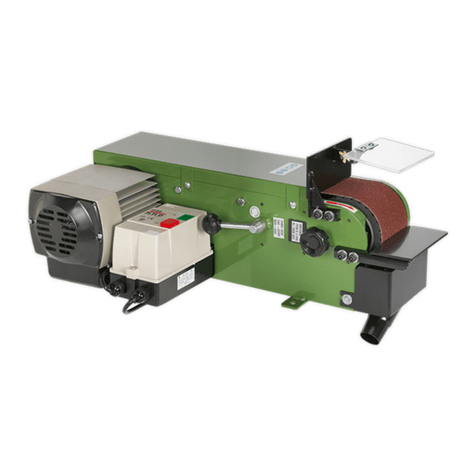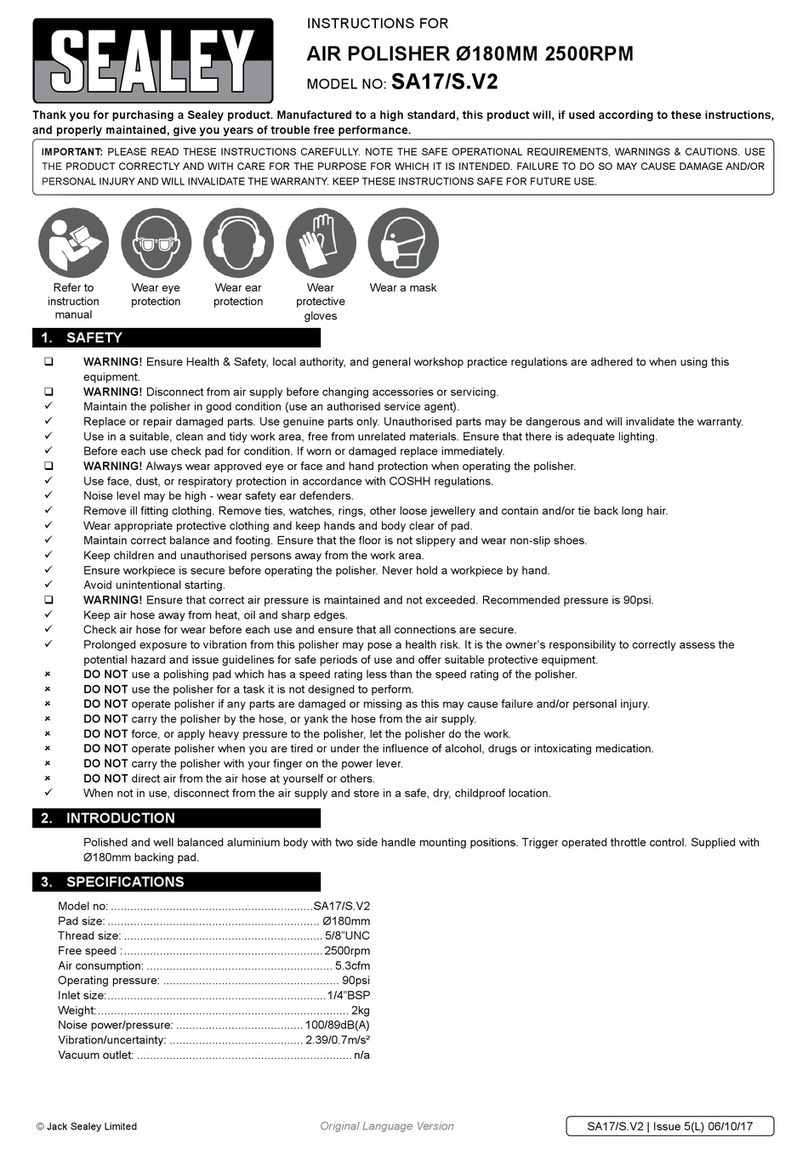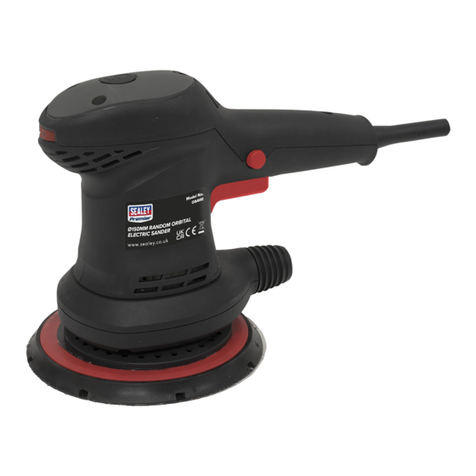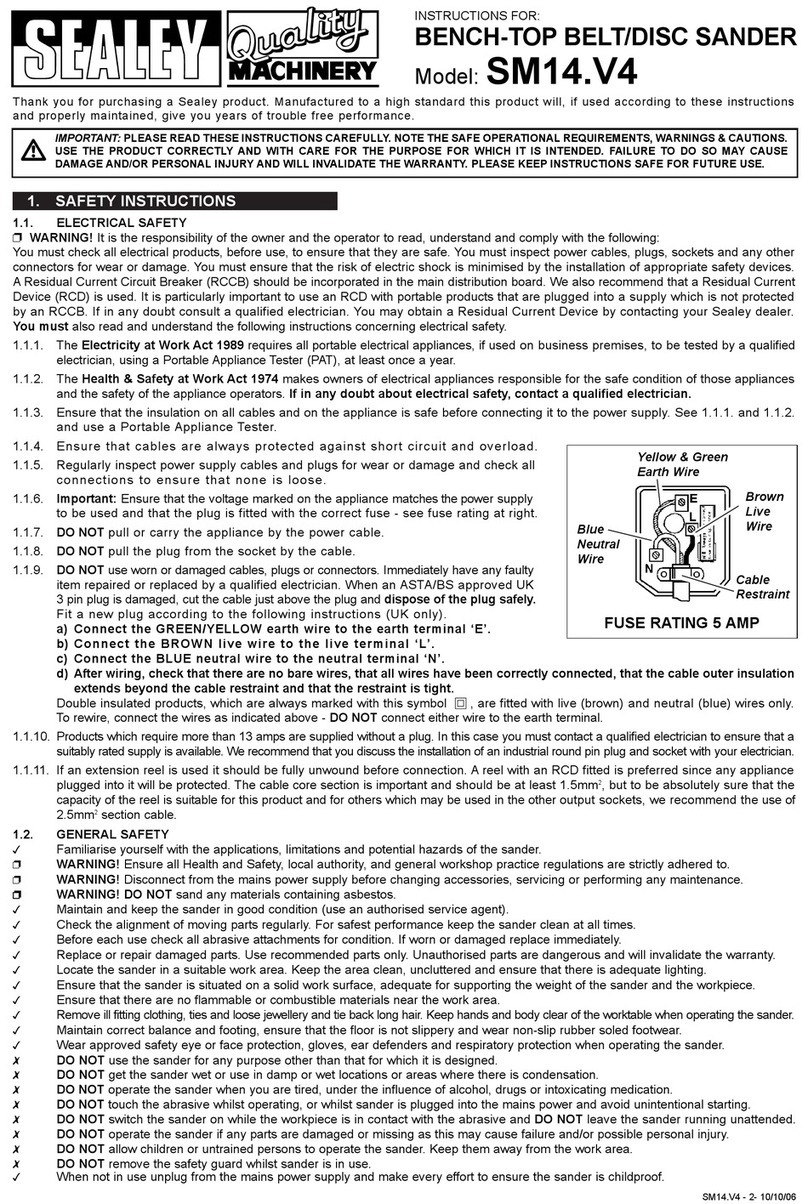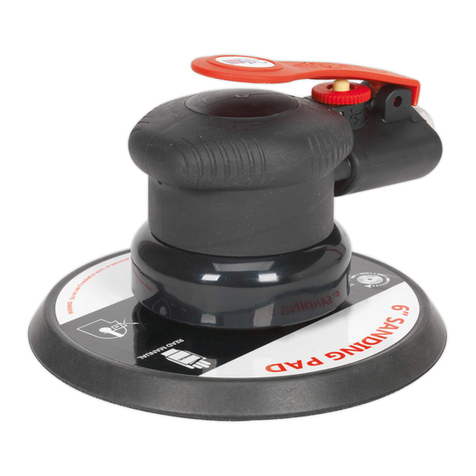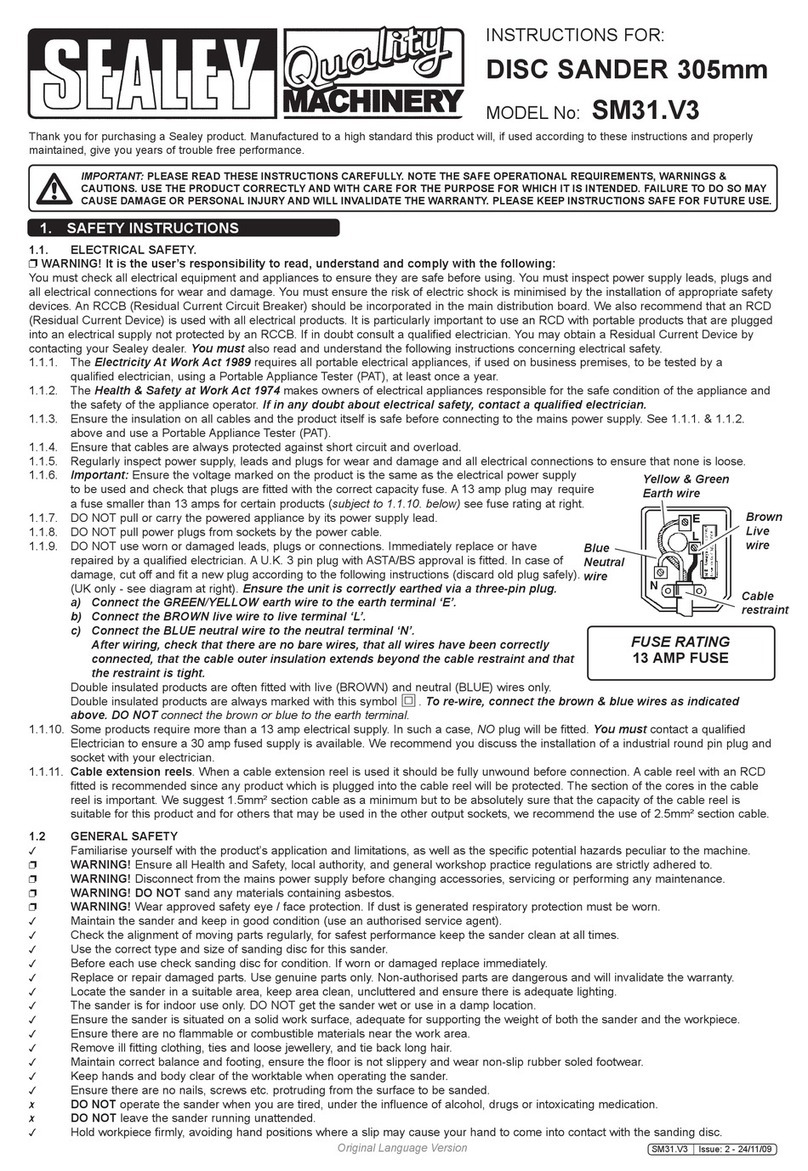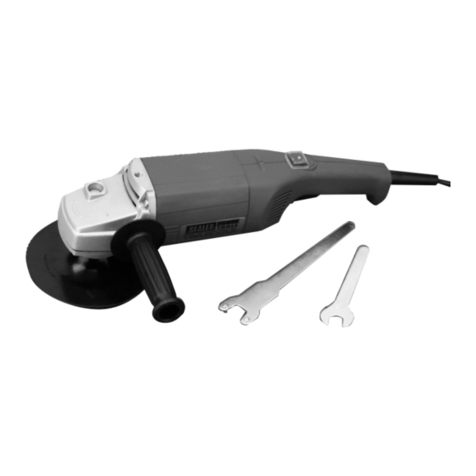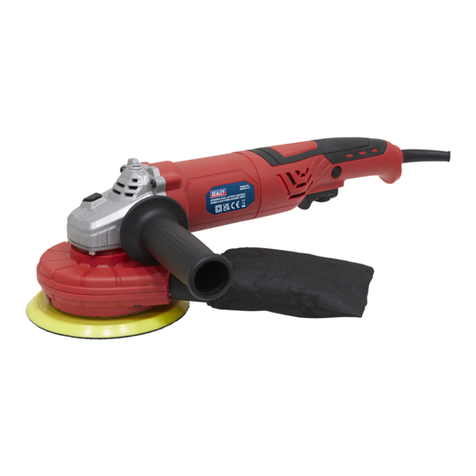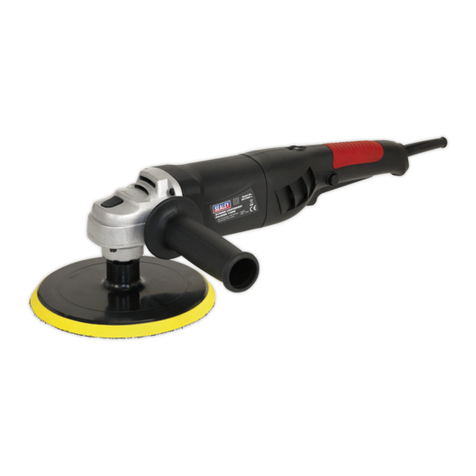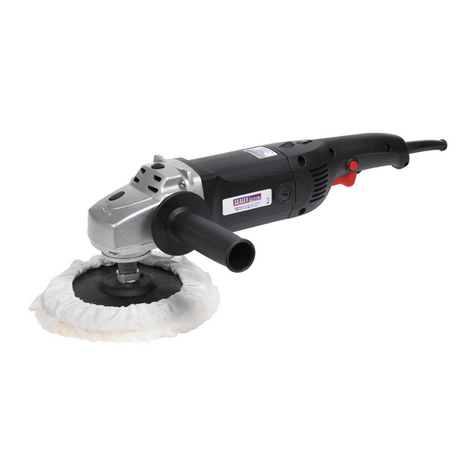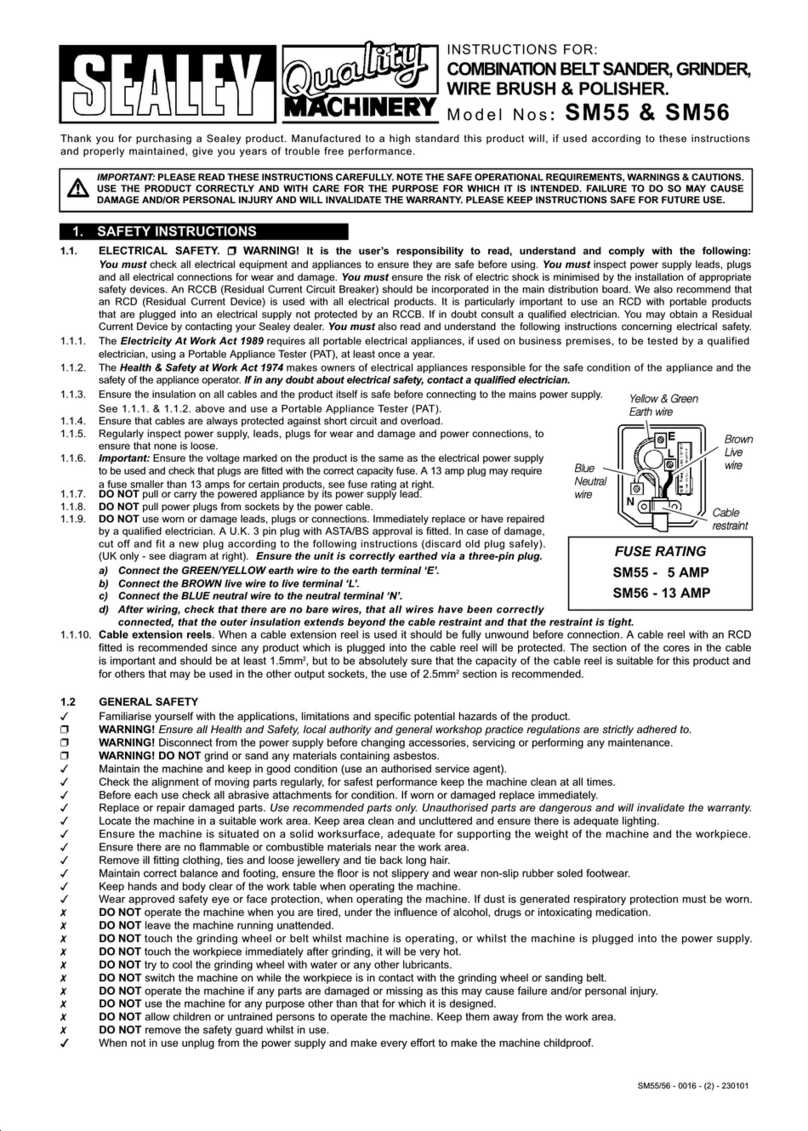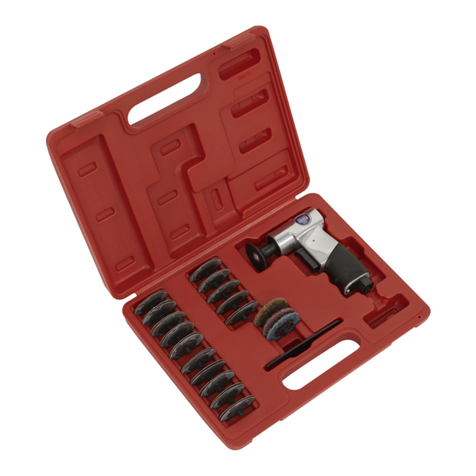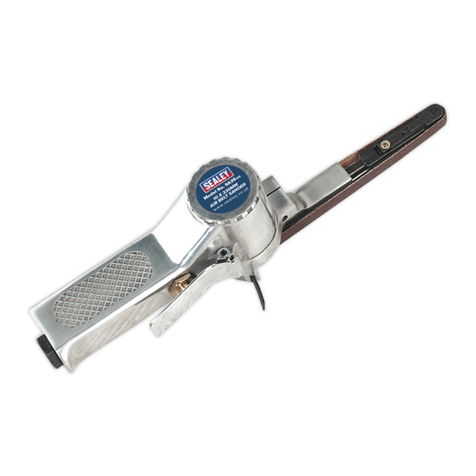
2. INTRODUCTION & SPECIFICATION
3.1. Air Supply
3.1.1. Ensure the sander air valve (or throttle) is in the "off" position before connecting to the air supply.
3.1.2. You will require an air pressure between 70-90psi, and an air flow according to the specification above.
3.1.3. pWARNING! Ensure the air supply is clean and does not exceed 90psi while operating the sander.
Too high an air pressure and unclean air will shorten the product life due to excessive wear, and may be
dangerous, causing damage and/or personal injury.
3.1.4. Drain the air tank daily. Water in the air line will damage the sander and will invalidate your warranty.
3.1.5. Clean air inlet filter weekly. Recommended hook-up is shown in fig. 1.
3.1.6. Line pressure should be increased to compensate for unusually long air hoses (over 8 metres).
The minimum hose diameter should be 1/4 I.D. and fittings must have the same bore dimension.
3.1.7. Keep hose away from heat, oil and sharp edges. Check hoses for wear, and make certain that all
connections are secure.
3.2. Couplings
Vibration may cause failure if a quick change coupling is connected directly to the air sander. To overcome
this, connect a leader hose to the sander. A quick change coupling may then be used to connect the leader
hose to the air line recoil hose. See figs. 1 & 2.
pWARNING! Disconnect sander from air supply before changing accessories, servicing or performing maintenance.
Replace or repair damaged parts. Use genuine parts only. Unauthorised parts may be dangerous and will
invalidate the warranty.
5.1. If air supply does not have an oiler, lubricate the air sander daily (before and after use), with a few drops of
good quality air tool oil, Sealey ATO/500 or ATO1000, dripped into the air inlet, to prolong life of bearings.
5.2. Clean the sander after use and change pads when required.
5.3. Loss of power or erratic action may be due to the following:
a) Excessive drain on the air supply. Moisture or restriction in the air pipe. Incorrect size or type of hose
connectors. To remedy check the air supply and follow instructions in Section 3.
b) Grit or gum deposits in the sander may also reduce performance. If your model has an air strainer
(located in the area of the air inlet), remove the strainer and clean it. Flush the sander out with gum
solvent oil or an equal mixture of SAE 10 oil and kerosene. Allow to dry before use.
If you continue to experience problems, contact your local Sealey service agent.
5.4. For a full service contact your local Sealey service agent.
5.5. When not in use, disconnect from air supply, clean sander and store in a safe, dry, childproof location.
3. PREPARING SANDER FOR USE
4. OPERATING INSTRUCTIONS
5. MAINTENANCE
1.2. LEAD PAINT WARNING!
Paint once contained lead as a traditional ingredient. Contact with the dust from the removal of suchpaint
is toxic and must therefore be avoided. The following action must be taken before using the sander
on a surface that you suspect may contain lead paint.
1. User must determine potential hazard relating to age of paint to be removed (modern paints do
not have lead content).
2. DANGER! Keep all persons and pets away from the working area. The following are particularly
vulnerable to the effects of lead paint dust: Expectant women, babies and children.
3. We recommend personal protection by using the following safety items:
a) Paint Spray Respirator (Our ref SSP16EN)
b) PE Coated Hooded Coverall (Our ref SSP266).
c) Latex Gloves (Our ref SSP24).
4. Take adequate measures to contain the paint dust, flakes and scrapings.
5. Continue to wear safety equipment as in (3) above and thoroughly clean all areas when task is
complete. Ensure paint waste is disposed of in sealed bags or containers.
p
p
WARNING! Ensure you read, understand and apply safety instructions.
Note: Numbers in brackets refer to item numbers on the parts diagram.
4.1. Assembly
4.1.1. Stretch-fit finger cover (30P) over motor cover (30), not onto random balance body (15). Engage
ridge on finger cover with groove in motor cover.
4.1.2. Remove protective sleeve from sanding pad (8) thread and screw pad into pad mounting shaft (11)
4.1.3. Apply appropriate sanding pad to the backing disc. Use only pads with speed ratings equal to, or higher
than, the speed rating of the sander. DO NOT use cloth backed sanding pads.
4.1.4. Connect air supply to sander and press the control valve lever to check that the sander is working correctly.
4.1.5. The air flow may be regulated by turning the control knob on the side at the head of the handle.
4.2. Operation
The sander is designed to provide a combined rotary and random orbit action.
Always use a grit pad grade appropriate to the job. Work progressively from coarse grades to finer grades.
DO NOT go from coarse to fine in one step as it may be difficult to remove swirl marks left by the coarser grit.
DO NOT apply excessive pressure, let the sander do the work for you. Start the sander and bring the
sanding disc to the the work surface smoothly and slowly. Move the sander back and forth in overlapping
areas. Remove the sanding disc from the work surface before stopping the sander. Regularly check the
sanding pad for wear, always changed a cracked or damaged pad.
DO NOT allow sander to run free for an extended period of time as this will shorten bearing life.
fig. 1
Pad Size . . . . . . . . . . . . . . . . . . . . . .150mm
Thread Size . . . . . . . . . . . . . . . . .5/16UNF
Free Speed . . . . . . . . . . . . . . . . .10000rpm
Operating Pressure . . . . . . . . . . . . . . .90psi
Air Consumption . . . . . . . . . . . . . . . . .4cfm
Air Inlet . . . . . . . . . . . . . . . . . . . . .1/4BSP
Weight . . . . . . . . . . . . . . . . . . . . . . . . . .2kg
Sound Pressure . . . . . . . . . . . . . .85.1bB(A)
Vibration . . . . . . . . . . . . . . . . . . . . . .5.0M/s2
The SA7T has an internally chromed cylinder and precision bearings for super-smooth operation. The sander is
fitted with an air-flow control valve and housing insulation to prevent hand-chill.
We, the sole importer into the UK, declare that the product listed here is in conformity with the
following standards and directives. The construction file for this product is held by the
Manufacturer and may be inspected, by a national authority, upon request to Jack Sealey Ltd.
For Jack Sealey Ltd. Sole importer into the UK of
Sealey Power Tools.
Random Orbital Sander
Model: SA7T
98/37/EC Machinery Directive
93/68/EEC Marking Directive
14th December 2000
Declaration of Conformity
Signed by Mark Sweetman
fig. 2
SA7T - 3 - 170902
